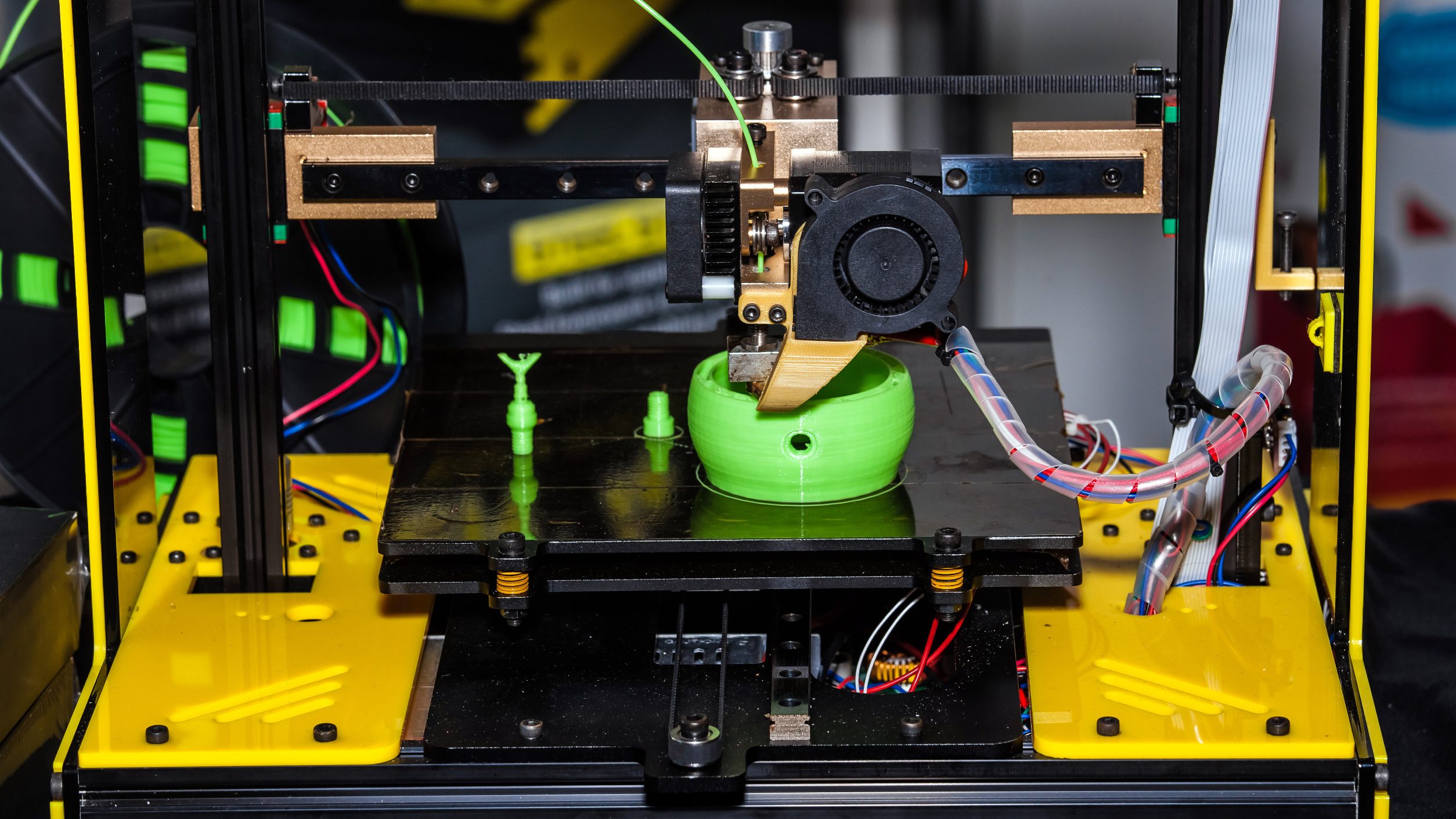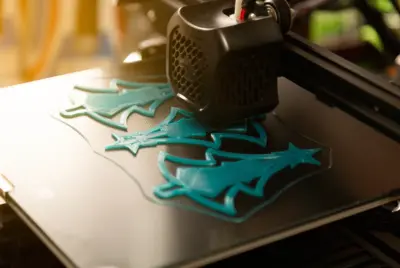Fastest 3D Printer: Unleashing the Power of Speed and Precision
Introduction
As a passionate 3D printing enthusiast and advisor, I understand the importance of speed when it comes to bringing ideas to life. The world of 3D printing has evolved significantly, and one of the most exciting advancements is the emergence of fast 3D printers. In this article, I will guide you through the realm of fastest 3D printer, shedding light on the technology, factors to consider, and provide recommendations for the fastest 3D printers available in the market today.
Understanding 3D Printing
Before diving into the realm of fast 3D printing, let’s briefly understand the basics. 3D printing, also known as additive manufacturing, is a revolutionary technology that allows the creation of three-dimensional objects from digital models. It works by layering materials, such as plastics, metals, or resins, to build objects based on the specifications provided by a 3D model.
Exploring Fast 3D Printing Technology
Fast 3D printing technology has taken the world by storm, enabling rapid production and prototyping. These printers leverage cutting-edge mechanisms and innovative techniques to expedite the printing process without compromising on quality or precision. By optimizing various aspects of the printing workflow, fast 3D printers can significantly reduce printing time, enhancing productivity and efficiency.
Factors to Consider for the Fastest 3D Printer
When searching for the fastest 3D printer, it’s essential to consider several factors to ensure you make an informed decision. Speed alone shouldn’t be the sole criterion; other aspects, such as print quality, reliability, ease of use, and material compatibility, also play crucial roles. Here are some key factors to keep in mind:
- Print Speed: The printing speed determines how quickly a printer can produce a finished object. Look for printers with high print speeds to reduce waiting time.
- Layer Resolution: While speed is vital, it’s equally important to maintain a high level of detail and precision. Pay attention to the layer resolution capability of a printer to ensure it meets your requirements.
- Build Volume: Consider the size of the objects you intend to print. A larger build volume allows you to create bigger prints or multiple objects simultaneously, improving overall productivity.
- Material Compatibility: Different printers support various materials. Ensure the printer you choose is compatible with the materials you plan to work with.
Fastest 3D Printers on the Market

Based on extensive research and personal experience, here are my top recommendations for the fastest 3D printers available in the market today:
Creality Ender 3 Pro
- Speed: The Creality Ender 3 Pro offers a decent printing speed, allowing users to create their projects efficiently.
- Technology: This printer utilizes fused deposition modeling (FDM) technology, which melts and deposits filament layer by layer to create objects.
- Materials: The Ender 3 Pro is compatible with a wide range of filaments, including PLA, ABS, PETG, TPU, and more, providing flexibility for different applications.
- Additional Features: It features a sturdy aluminum frame, a removable magnetic build surface, and a user-friendly interface with a control knob for easy operation.
- Upgrades: The Ender 3 Pro has gained popularity among the 3D printing community due to its modifiability. Users often upgrade the printer with enhancements such as a silent mainboard, upgraded extruder, and improved cooling systems for enhanced performance.
Prusa i3 MK3S+
- Speed: The Prusa i3 MK3S+ offers a respectable printing speed, allowing users to produce their creations efficiently.
- Technology: This printer utilizes fused deposition modeling (FDM) technology, which melts and deposits filament layer by layer to create objects.
- Materials: The Prusa i3 MK3S+ supports a wide range of materials, including PLA, ABS, PETG, and more, providing versatility for different projects.
- Additional Features: It features an automatic bed leveling system, a removable magnetic build plate, and a filament sensor that pauses prints when filament runs out or breaks.
Anycubic Photon Mono X
- Speed: The Anycubic Photon Mono X is a resin-based printer that offers rapid printing speeds, allowing for quick creation of highly detailed models.
- Technology: This printer utilizes LCD-based curing technology, where an LCD panel selectively cures the resin layer by layer to create precise objects.
- Materials: The Photon Mono X is compatible with a wide range of UV-sensitive resins, enabling the production of high-resolution prints with intricate details.
- Additional Features: It features a large build volume, a user-friendly touchscreen interface, and a dual linear rail system for enhanced stability and accuracy.
ELEGOO Mars 4 Max MSLA
- Speed: ELEGOO Mars 4 Max MSLA boasts rapid printing capabilities, rivaling many competitors in its class.
- Technology: The Mars 4 Max utilizes MSLA technology, which combines a digital LCD screen with UV LED lighting. This setup ensures precise exposure and accurate layer curing, leading to superior print quality and details.
- Materials: ELEGOO offers a diverse range of resin options tailored for the Mars 4 Max, including standard, tough, and water-washable variants, catering to different printing requirements and applications.
- Additional Features: ELEGOO’s dedicated software ensures seamless slicing and printing experiences. Their commitment to user feedback means the product sees regular enhancements and refinements.
MakerBot Replicator+
- Speed: The MakerBot Replicator+ 3D Printer Educator Edition is designed to efficiently cater to educational environments, ensuring timely print completions for classroom settings.
- Technology: The Replicator+ utilizes Fused Deposition Modeling (FDM) technology, which melts and extrudes PLA filament layer by layer to create solid 3D models. This method guarantees detailed and reliable prints suitable for educational purposes.
- Materials: This Educator Edition comes bundled with PLA filament, a biodegradable thermoplastic derived from renewable resources. This material is ideal for schools due to its safety, ease of use, and environmental friendliness.
- Additional Features: The B2SCHOOLKIT not only provides the printer but also integrates lesson plans and a Certification Professional Development Course, ensuring educators are fully equipped to integrate 3D printing into their curriculums effectively.
Recapitulation:
While industrial 3D printers dominate the realm of speed, there are also options available for individuals who want to explore the world of 3D printing within the niche market. The Prusa i3 MK3S+, and Anycubic Photon Mono X provide impressive features and capabilities while catering to the needs of hobbyists, designers, and enthusiasts. These printers offer different technologies, material compatibility, and additional features, ensuring that users can embark on their creative journeys with speed, precision, and flexibility.
The Creality Ender 3 Pro is a popular choice among individuals who are interested in 3D printing. While it may not be the fastest printer on the market, it offers a reliable printing speed and a range of material compatibility to accommodate various projects. With its robust construction and upgradability, the Ender 3 Pro provides users with the flexibility to customize and enhance their printing experience. Whether you are a beginner or an experienced enthusiast, the Ender 3 Pro can serve as an affordable and versatile 3D printer for your creative endeavors.
As the field of 3D printing continues to evolve, the quest for faster printers has intensified. The ELEGOO Mars 4 Max MSLA, and MakerBot Replicator+ stand at the forefront of this race, each offering unique features and advantages. With their impressive speeds and cutting-edge technologies, these printers pave the way for accelerated manufacturing, rapid prototyping, and efficient production of end-use parts. Whether you’re a hobbyist, a designer, or an industrial manufacturer, the availability of fast 3D printers ensures that your creative visions can be transformed into reality at an unprecedented pace.
Benefits of Fast 3D Printing

Fast 3D printing brings a multitude of benefits to the table. Let’s explore some advantages:
- Time Efficiency: The primary benefit of fast 3D printing is reduced production time. Projects that once took days can now be completed in hours, enabling faster iterations and quicker product development.
- Increased Productivity: Fast printers allow for higher output, boosting overall productivity. This is particularly advantageous for businesses and professionals dealing with time-sensitive projects or tight deadlines.
- Rapid Prototyping: Fast 3D printing accelerates the prototyping process, enabling designers and engineers to quickly iterate and refine their designs. This leads to faster product validation and shorter development cycles.
- Cost Savings: With faster printing times, material wastage is reduced, resulting in cost savings. Additionally, increased productivity translates to higher output, maximizing the return on investment for 3D printers.
Applications of Fast 3D Printing
The speed of fast 3D printers opens up a world of possibilities across various industries. Some notable applications include:
Product Design and Development
Fast 3D printing allows designers to bring their concepts to life quickly, facilitating rapid iteration and design validation.
Manufacturing and Prototyping
Fast printers enable on-demand production, making it feasible to create custom parts, prototypes, and small-batch manufacturing with shorter lead times.
Medical and Healthcare
Fast 3D printing plays a vital role in healthcare, enabling the production of personalized medical devices, prosthetics, and anatomical models for surgical planning.
Education and Research
Educational institutions and research facilities benefit from fast 3D printing by accelerating the development of prototypes, models, and experimental setups.
Tips for Maximizing the Speed of 3D Printing
To make the most of your fast 3D printer, consider the following tips:
Optimize Settings
Fine-tune your printing settings, such as layer height, infill density, and print speed, to strike a balance between speed and quality.
Use High-Speed Printing Modes
Many printers offer high-speed printing modes specifically designed for faster output. Explore these options to expedite your prints.
Simplify Designs
Complex models with intricate details can significantly slow down the printing process. Simplify your designs whenever possible to reduce print time.
Choose the Right Materials
Some materials are inherently faster to print than others. Select materials known for their speed, such as PLA, and experiment with different filaments to find the optimal balance between speed and strength.
Challenges and Limitations of Fast 3D Printing
While fast 3D printing offers numerous benefits, it’s important to be aware of the challenges and limitations:
- Quality Trade-offs: Pushing the speed limits of a printer may result in compromised print quality, including reduced surface finish and accuracy. Finding the right balance between speed and quality is crucial.
- Limited Material Compatibility: Not all materials can be printed at high speeds. Some specialty materials may require slower print speeds or specific printer configurations.
- Noise and Vibration: Fast printing often generates more noise and vibrations, which can impact the overall printing experience. Ensure your workspace is adequately prepared for these factors.
- Maintenance and Upkeep: Fast printers may require more frequent maintenance and calibration to sustain their high-speed capabilities. Stay vigilant in maintaining your printer to avoid performance issues.
Conclusion
In conclusion, fastest 3D printer technology has revolutionized the way we bring ideas to life. By harnessing the power of speed, precision, and efficiency, fast 3D printers have opened up endless possibilities across various industries. Consider the factors discussed, explore the recommended printers, and leverage the tips provided to make an informed decision based on your specific requirements.
FAQs
- Are fast 3D printers suitable for beginners?
Yes, there are fast 3D printers designed with user-friendly interfaces and simplified workflows, making them accessible to beginners. - Can fast 3D printers produce high-quality prints?
Yes, while there may be trade-offs between speed and quality, fast 3D printers can still produce prints with satisfactory levels of quality and precision. - Are all materials compatible with fast 3D printers?
Not all materials are ideal for fast printing. Some materials require slower speeds or specific printer configurations to achieve optimal results. - How can I maintain a fast 3D printer?
Regular maintenance, including cleaning, lubrication, and calibration, is essential to ensure the printer continues to perform at its fastest speed. - Can I upgrade the speed of my existing 3D printer?
It depends on the printer model and its upgradeability. Some printers offer speed upgrade options, while others may have limitations imposed by their hardware design. Check with the manufacturer or consult a professional for guidance.
Resources
Wiley Online Library – Fast-Response, Stiffness-Tunable Soft Actuator by Hybrid Multimaterial 3D Printing




